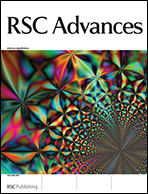Herein, we designed a new electrochemical immunoassay protocol for the detection of IgG1, as a model biomolecule, by using poly(amidoamine) dendrimer-encapsulated CdS quantum dots (DEQD) as molecular tags. Initially, monoclonal anti-human IgG1 specific antibody (mAb1) was anchored on a bovine serum albumin-modified glassy carbon electrode preferably selective to capture Fab of IgG1 from the sample. For the determination, monoclonal anti-human IgG1 (Fc specific) antibody (mAb2) was covalently bound onto the as-prepared DEQD based on a typical carbodiimide coupling. With a sandwich-type immunoassay format, the subsequent anodic stripping voltammetric detection of cadmium released under acidic condition from the coupled quantum dots (QD) was conducted in 2-mL pH 2.5 HCl containing 0.01 M KCl. Under optimal conditions, the dynamic concentration range of the developed immunoassay spanned from 0.1 pg mL−1 to 100 ng mL−1 IgG1 with a detection limit (LOD) of 0.06 pg mL−1 toward IgG1. The electrochemical immunoassay showed good reproducibility, selectivity and stability. The analysis of human serum specimens were in good accordance with the results obtained by a referenced enzyme-linked immunosorbent assay (ELISA) method.

You have access to this article
 Please wait while we load your content...
Something went wrong. Try again?
Please wait while we load your content...
Something went wrong. Try again?


 Please wait while we load your content...
Please wait while we load your content...